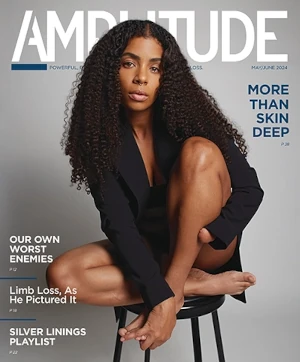
When Shaquem Griffin entered the NFL draft five years ago, he wrote an open letter to the league’s general managers. “I know there are some scouts and coaches who are doubting me, and I get it,” he wrote. “I only have one hand, and because of that, there have always been people who have questioned whether or not I could play this game.”
Griffin recalled a story from his youth football league, when an opposing coach tried to keep him off the field because football is game for two-handed people. He wrote about his first few years of college ball, when—despite his outstanding speed, strength, and football instincts—he never made it into a game, not even for one play. The letter didn’t dwell on the accolades that Griffin earned later, including All-American recognition in his senior year. His purpose came from being overlooked, underestimated, and dismissed—and proving the doubters wrong.
“If you’re one of those GMs who believes that I can play in the NFL, I just want to say thank you,” Griffin concluded. “And if one you’re of those who is doubting me, I want to thank you, too. Because you’re what keeps me motivated every day to work hard and play even harder.”
If you’re a football fan, you know what happened next: Griffin did get drafted and spent four years in the NFL, becoming the first (and only) amputee to play on American sports’ biggest stage. Now that he’s entered the post-NFL phase of his life, Griffin is still taking on doubters and looking for ways to inspire other people with disabilities to do the same.
His latest endeavor—and the reason Griffin is on the cover of this month’s issue—is to promote accessible fashion by hosting Runway of Dreams’ annual New York Fashion Week shindig on September 13. “You want to be able to show your [limb difference] as a sign of strength, not a weakness, and your clothes can help you feel that,” he tells Amplitude. We’ve got much more on the subject from Griffin and a handful of Runway of Dreams’ other NYFW models in “Dressed for Success,” starting on page 12.
Many women in healthcare can relate to Griffin’s feelings of being underestimated and overlooked. Female doctors have spent decades fighting for the same respect and influence as their male colleagues. They’re finally making inroads—and now the same process is unfolding within the O&P profession. Find out how women prosthetists are influencing care standards, and what this means for amputees, starting on page 18.
You’ll also enjoy Diana Theobald’s entertaining musings on her career in “How to Be an Amputee With a Job” (page 28) and Alexandra Capellini’s touching memoir of her recent encounter with amputees in Ethiopia (page 24). Happy reading.




